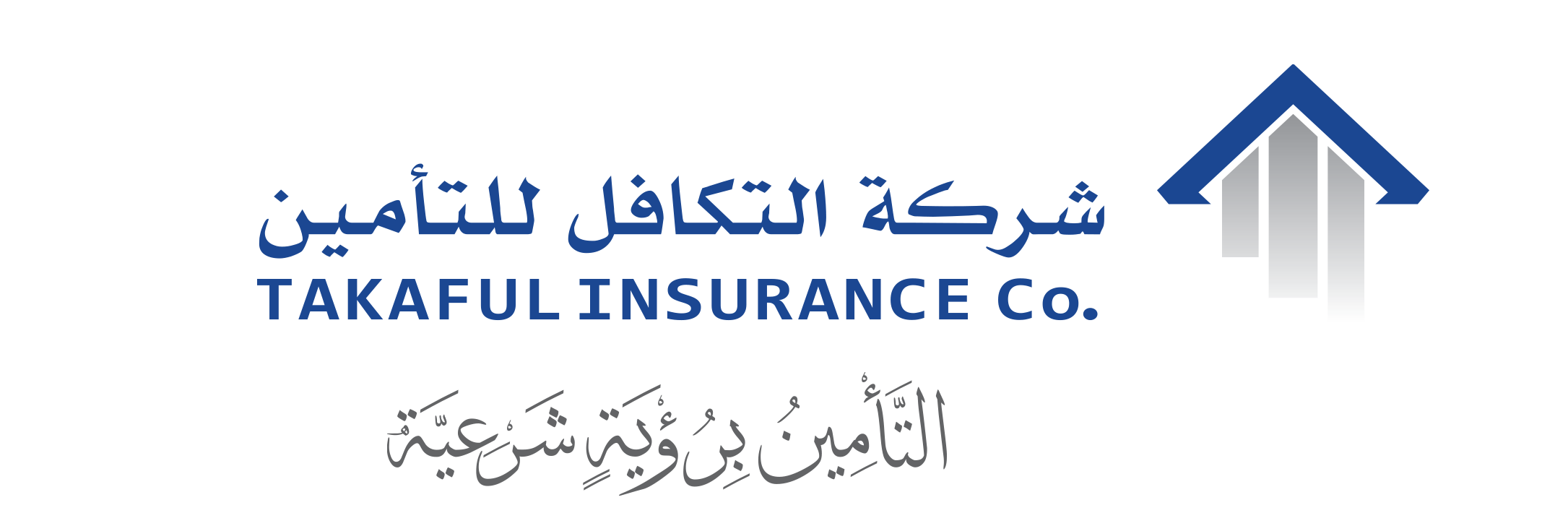Other insurances

Engineering insurance:
The Takaful Insurance Company provides a set of engineering insurance policies that cover material losses or damages that can be caused to projects, machinery and equipment, as follows -:
- Contractors’ all risks insurance
Construction works contractors are exposed to losses due to multiple reasons, from the moment of supplying the materials to the site until the end of the contract and delivery through all the implementation stages. The contracting insurance policy is designed to compensate the contractor for such losses by providing a wide range of protection against potential losses to the insured elements during The period specified in the contract.
– Business that can be insured
You can be insured on all types of construction projects and building , such as housing projects, warehouses, schools, hospitals and industrial facilities, offices, water systems, sanitation and water treatment plants, dams, roads, railways, airports, bridges, tunnels, tanks, shipyards … etc.
- Covering the contracting insurance policy
It is imperative to understand the contract requirements and link them to the potential risks occurring before designing the appropriate program to provide the required protection, and in any case, the different sections of the document usually cover the following:: –
- Contract works including cost of materials used
- Construction equipment and installations
- Construction machinery
- Remove debris
- The property of the employer located in the work area
- Civil liability to third parties in relation to bodily injury or property damage
- Security deposit
A separate insurance amount must be approved for each of the items . As for the contract work, the initial value of the contract is usually taken into consideration to determine the insurance contribution that is settled at the end of the contract based on the final value of the contract, and the value of any materials provided by the project owner is added to the contract value to reflect the insurance amount .
- Insurance procedure costs
Insurance costs are determined according to the nature and type of the project to be insured, the duration and method of its implementation, the conditions of the work site and its surroundings, which affect the increase or decrease of risks, and other variables that are taken into account when calculating the cost . Usually coverage for third party liability is included in the offered insurance price.
- Deduction amounts( deductibles )
It is not uncommon for a deduction ( bearing ) amount to be determined from all claims so that the contractor bears minor losses that are less than this amount, given that minor accidents in construction work are almost inevitable and usually the contractor is included in reserve for that when pricing the project, especially since in many of these cases it may The expenses of pursuing compensation and its documents are greater than the value of the simple losses themselves . The deduction amount varies according to the contractor’s desire . In general, the higher the deductible amount, the lower the insurance cost.
- Additional/ Optional covers
– Business acceleration expenses :
For an additional fee, the policy’s coverage can be expanded to include additional expenses for speeding up work after an accident so that the project can be delivered on the specified dates, such as work outside work, work during official holidays, express shipping, air transport … etc. Related to the repair or replacement of what is covered Covered in the insurance policy.
- Maintenance period:
It is not uncommon for policy coverage to cease when work on a project is completed and delivered or when it is put into service or use . However, some contracts provide for a maintenance period after completion of the work, and in this case, the coverage period can be extended under an additional agreement to include the maintenance period.
- Off-site storage:
If the contractor does not have sufficient space at the work site to store the project materials, equipment, or machinery insured, the coverage can be expanded to include those materials, equipment and machinery while stored at another location as well as during transportation by land from those sites to the work site..
Dangers of strike, riots and civil unrest
The scope of the policy can be expanded to cover the losses that befall the insured personnel as a direct result of strikes, riots, labor or civil unrest, or actions that the legitimate authority may take in order to prevent or limit them..
- Securing all installation risks
- The basic covers of the document
First : material losses
The policy covers all emergency dangers such as the dangers of fire, thunderbolt, explosion, flood, wind, earthquake, theft and others . Coverage includes industrial and engineering installations, testing, and construction work such as excavation, leveling, construction of the contractor’s temporary buildings and debris removal costs . The coverage also includes the property surrounding the site, whether owned, in his custody, or under the supervision of the insured
Second : Legal responsibility
This section covers the legal liability of the insured resulting from death and bodily injury to the third party as well as the material loss of property that is owned by the third party, in his custody or under his supervision..
- Additional Coverages:
These are the covers that are excluded from the original policy, where the insurance coverage can be expanded to include it in exchange for paying an additional premium, and the most important of these coverage is:
- Covering the corresponding responsibilities.
- Covering maintenance visits.
- Extended Maintenance Coverage.
- Covering loss resulting from strike, riot or civil unrest.
- Expenses for overtime or work during holidays to deliver the project on time.
- Additional charges for express or air freight.
– Terms and additional annexes to the document
- Conditions for cables, pipes and underground utilities.
- Existing construction or property surrounding the project site.
- Conditions for fire fighting equipment.
- Architects, surveyors and consultants’ fees.
- Earthquakes, flood and storm conditions.
- Insured
It is the person in whose name the document is issued and is the owner of the project or the installation contractor . It is imperative to indicate the subcontractors and include their names in the document, if any.
- The term of insurance
The insurance period is determined on the basis of the period of time that the project takes, whether it is a year, two years, three years or more, and the insurance continues to be valid throughout the duration of the installation project . The responsibility of the company begins as soon as work on the project begins . The document expires at the latest, the date specified for the end of the project in the schedule, or the expiration and delivery date of the project, or in the event that the first run test or the first pilot test is completed.
- Security deposit
The security amount in which the policy is issued is the amount equal to the value of the equipment that is installed and included in the installation contract, plus the freight and customs fees and the value of the covered property . The value of the security deposit can be adjusted in the event that the value of the project equipment is increased.
- Insurance price
The insurance price for all installation risks is determined according to several factors, the most important of which are:
- Expected emergency accidents.
- Project type, size and technical specifications.
- Installation Contractor Experience.
- The risks surrounding the project, such as the proximity of the project site to gas stations.
- The cumulative loss rate for installation risks, which is determined according to the experience of the insurance company.
- Durable value.
- Additional terms such as maintenance period.
- The proximity of the project site to the civil defense.
- Factors affecting the risks of legal liability, which are mainly related to the area surrounding the project site.
– Cover exclusions
The installation risks insurance policy excludes loss or damage resulting from wear, erosion, corrosion and others . It also excludes loss or damage caused by faulty design, or defective or inferior materials used in the project . It excludes consequential loss, including penalties and fines resulting from the delay in implementing the project . The policy does not cover liability towards the contractor’s workers, family members, owners of the project, or any other establishment related to the project . There are also some other general and special exclusions that are included in the original insurance policy.
- Machinery breakage insurance) breakdown machines )
Under this insurance, the insured shall be compensated for any damage or loss to the insured objects ( machines ) mentioned in the insurance schedule during the period of insurance mentioned in the insurance policy resulting from sudden, unforeseen material damage..
– Causes of damage and loss
- Design error.
- Product defect.
- Syntax error.
- Misuse and lack of experience.
- Neglect.
- Lack of water for boilers.
- The explosion.
Compensation is made either in cash, repair or replacement ( according to the agreement ) and the responsibility of the company begins after the success of the trial operation of the machines.
- Insurance amounts
The security amount is equivalent to the replacement value of the insured machines with new machines of the same type and capacity , meaning the replacement value in addition to shipping , customs , installation … Etc. , insurance is not subject to the depreciation clause.
- Insurable property
The document covers all types of machines and associated devices during their operation, except for those equipment with a short service life such as interchangeable tools , filters , cylinders , gear serrations , ropes , chains , belts , pieces made of glass , rubber , wood or ceramic , as well as means of operation Such as fuels / refrigerants / catalysts / lubricants … Etc , not insurable.
- Calculate the insurance premium
The price is calculated on a per year basis from the total amount insured based on the replacement value of each machine.
- Securing the contractor’s machinery and equipment
The policy covers financial losses resulting from / sudden and unexpected loss of the insured equipment and machinery with a maximum of the insured amount for each item ( which is considered a full replacement cost ) on the basis of “ all risks ” such as : fire, theft and natural hazards excluding losses or damages resulting from mechanical failure or electrical .
- Insurable property
The policy covers all types of machines, equipment and associated facilities ( which are installed temporarily at work sites ) while these machines are in operation or without operation or in a disassembled state ( i.e. for the purpose of service and maintenance ) and thus all types of earth moving machines and stationary lifting machines And movers such as winches and cutting tools are all covered.
- Basis for calculating compensation
- In the event that the mechanism is damaged that can be repaired: the responsibility of the company is determined to pay the necessary expenses that are spent to restore the damaged mechanism / equipment to its previous operational condition..
- In the event of damage or destruction of the mechanism: the company pays the actual value of the mechanism immediately before the occurrence of the damage, including the normal freight, installation costs, customs duties and taxes if any, provided that these expenses have been included in the insurance amount
- Securing electronic devices
Under this insurance, the insured is compensated for the damage and loss that occurs to electronic devices, equipment and software as a result of an unforeseen and emergency accident , and the amount of insurance is calculated on the basis of the replacement value of new devices of the same type and capacity in addition to shipping, customs and installation expenses minus the depreciation value..
